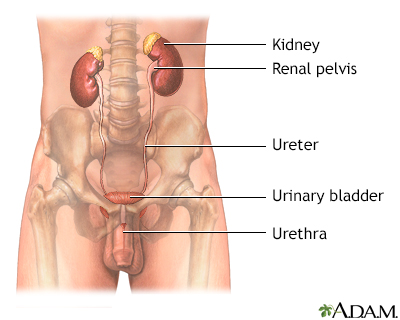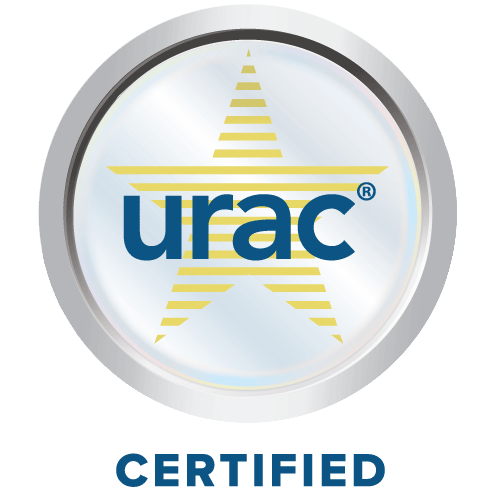Myoglobin urine test
Urine myoglobin; Heart attack - myoglobin urine test; Myositis - myoglobin urine test; Rhabdomyolysis - myoglobin urine test
The myoglobin urine test is done to detect the presence of myoglobin in urine.
Myoglobin can also be measured with a blood test.
Images



How the Test is Performed
A clean-catch urine sample is needed. The clean-catch method is used to prevent germs from the penis or vagina from getting into a urine sample. To collect your urine, your health care provider may give you a special clean-catch kit that contains a cleansing solution and sterile wipes. Follow instructions exactly so that the results are accurate.
How the Test will Feel
The test involves only normal urination, which should cause no discomfort.
Why the Test is Performed
Myoglobin is a protein in heart and skeletal muscles. When you exercise, your muscles use up available oxygen. Myoglobin has oxygen attached to it, which provides extra oxygen for the muscles to keep up a high level of activity for a longer period.
When muscle is damaged, myoglobin in muscle cells is released into the bloodstream. The kidneys help remove myoglobin from the blood into the urine. When the level of myoglobin is too high, it can damage the kidneys.
This test is ordered when your provider suspects you have muscle damage, such as damage to the heart or skeletal muscle. It may also be ordered if you have acute kidney failure without any clear cause.
Normal Results
A normal urine sample does not have myoglobin. A normal result is sometimes reported as negative.
Normal value ranges may vary slightly among different labs. Talk to your provider about the meaning of your specific test results.
What Abnormal Results Mean
Abnormal results may be due to:
- Heart attack
- Malignant hyperthermia (very rare)
- Disorder that causes muscle weakness and loss of muscle tissue (muscular dystrophy)
- Breakdown of muscle tissue that leads to the release of muscle fiber contents into the blood (rhabdomyolysis)
- Skeletal muscle inflammation (myositis)
- Skeletal muscle ischemia (oxygen deficiency)
- Skeletal muscle trauma
Risks
There are no risks with this test.
Related Information
Acute kidney failureMyositis
Causes
Heart attack
Heart attack - test
Muscular dystrophy
Rhabdomyolysis
Malignant hyperthermia
References
Nagaraju K, Aggarwal R, Lundberg IE. Inflammatory diseases of muscle and other myopathies. In: Firestein GS, McInnes IB, Koretzky GA, Mikuls TR, Neogi T, O'Dell JR, eds. Firestein & Kelley's Textbook of Rheumatology. 12th ed. Philadelphia, PA: Elsevier; 2025:chap 86.
Selcen D. Muscle diseases. In: Goldman L, Cooney KA, eds. Goldman-Cecil Medicine. 27th ed. Philadelphia, PA: Elsevier; 2024:chap 389.
BACK TO TOPReview Date: 2/13/2025
Reviewed By: Jacob Berman, MD, MPH, Clinical Assistant Professor of Medicine, Division of General Internal Medicine, University of Washington School of Medicine, Seattle, WA. Also reviewed by David C. Dugdale, MD, Medical Director, Brenda Conaway, Editorial Director, and the A.D.A.M. Editorial team.

Health Content Provider
06/01/2028
|
A.D.A.M., Inc. is certified by URAC, for Health Content Provider (www.urac.org). URAC's certification program is an independent audit to verify that A.D.A.M. follows rigorous standards of quality and accountability. A.D.A.M. is among the first to achieve this important distinction for online health information and services. Learn more about A.D.A.M.'s editorial policy, editorial process and privacy policy. |
The information provided herein should not be used during any medical emergency or for the diagnosis or treatment of any medical condition. A licensed medical professional should be consulted for diagnosis and treatment of any and all medical conditions. Links to other sites are provided for information only -- they do not constitute endorsements of those other sites. © 1997- 2025 A.D.A.M., a business unit of Ebix, Inc. Any duplication or distribution of the information contained herein is strictly prohibited.
